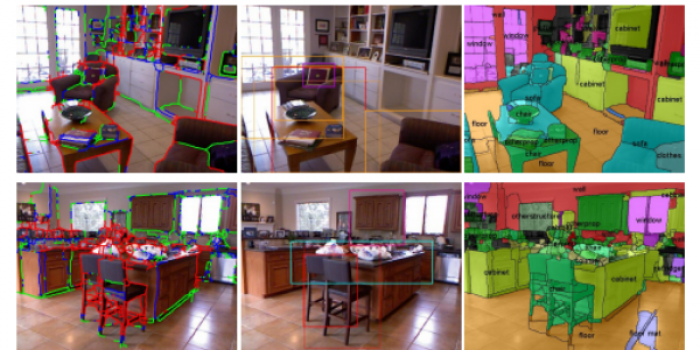
S. GUPTA, P. ARBELAEZ, R. GIRSHICK AND J. MALIK
INTERNATIONAL JOURNAL OF COMPUTER VISION (IJCV), 2015
Abstract
In this paper, we address the problems of contour detection, bottom-up grouping, object detection and semantic segmentation on RGB-D data. We focus on the challenging setting of cluttered indoor scenes, and evaluate our approach on the recently introduced NYU-Depth V2 (NYUD2) dataset (Silberman et al., ECCV, 2012). We propose algorithms for object boundary detection and hierarchical segmentation that generalize the 𝑔𝑃𝑏−𝑢𝑐𝑚 approach of Arbelaez et al. (TPAMI, 2011) by making effective use of depth information. We show that our system can label each contour with its type (depth, normal or albedo). We also propose a generic method for long-range amodal completion of surfaces and show its effectiveness in grouping. We train RGB-D object detectors by analyzing and computing histogram of oriented gradients on the depth image and using them with deformable part models (Felzenszwalb et al., TPAMI, 2010). We observe that this simple strategy for training object detectors significantly outperforms more complicated models in the literature. We then turn to the problem of semantic segmentation for which we propose an approach that classifies superpixels into the dominant object categories in the NYUD2 dataset. We design generic and class-specific features to encode the appearance and geometry of objects. We also show that additional features computed from RGB-D object detectors and scene classifiers further improves semantic segmentation accuracy. In all of these tasks, we report significant improvements over the state-of-the-art.